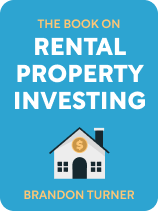

This article is an excerpt from the Shortform book guide to "The Book on Rental Property Investing" by Brandon Turner. Shortform has the world's best summaries and analyses of books you should be reading.
Like this article? Sign up for a free trial here.
Are you ready to invest in your first property? How do you choose an investment property that’ll generate money?
The Book on Rental Property Investing by Brandon Turner covers the basics of finding properties to invest in. You need to choose the location of your rental properties, the different property types to pick from, and how to find suitable properties.
Continue reading to learn how to choose an investment property.
1. Choosing a Location
Depending on who your renters are, you must consider the location of your rental property. Several factors, including neighborhood classes and schools, lower or raise the property’s value. To figure out how to choose an investment property, you’ll need to choose a location first.
Neighborhood Classes
Turner argues that when choosing where to invest in rental properties, it’s important to consider neighborhood class. This is a rating based on the major socio-economic features of an area, along with the typical condition, age, and average prices of its properties. These factors deeply impact property values and attractiveness to desirable tenants. While there’s no formal metric for neighborhood classing, landlords generally agree on an A, B, C, and D scale. Individual buildings receive a correlating letter value based on similar criteria.
Higher-class neighborhoods (A and B) have higher employment rates, income rates, and property values, along with good infrastructure—factors attractive to tenants. Both price and demand are typically higher for properties in these neighborhoods, lowering cash flow because you have to keep rents competitive. If buying properties in the center of these neighborhoods is too costly, or rent streams don’t promise to eventually cover costs, consider buying properties in the area’s periphery, where prices often decrease.
Turner notes that lower-class properties (C and D) can be easy to add value to through forced appreciation. However, if the area suffers from neglect, economic hardship, or crime, you may find it hard to find reliable and financially stable tenants—many people aren’t willing to accept these conditions for the long-term.
Additional Locational Draws
Aside from class, other locational features can appeal to would-be tenants, adding value to your investment. Strong educational options and nearby schools are key motivators for renting families, and most renters value good transportation and the availability of common retailers. As a rule of thumb, Turner suggests you ask yourself if you’d like to live where your rental property is located. Chances are your would-be tenant would react similarly.
2. Choosing a Property Type
After deciding on a location, consider what type of property you’re interested in renting. Each has advantages and disadvantages: Turner suggests considering things like maintenance needs, financing options, and competition when choosing what’s right for you.
Single-family homes draw long-term tenants and are often more affordable than other property types (for instance, apartment buildings). Also, you’ll control the whole property, meaning it’s easier to manage the grounds and run appreciation projects. However, you may face more competition when buying these properties, primarily from homeowners. It can also be hard to build wealth investing in these properties, as conventional lenders usually only allow you to finance limited properties at a time.
Turner explains that multi-family homes have multiple units, potentially offering more rent. You’ll also face less homeowner competition when buying one. However, the more units involved, the more maintenance is typically required, and the higher the purchase price. Additionally, you’ll face competition from other professional investors.
Condos and townhouses are both complex-based properties containing multiple units, often with different individuals owning different units. Turner notes that they both require low levels of maintenance and have low upkeep expenses. However, they’re typically overseen by homeowner associations (HOAs) that significantly limit your control over the property and charge substantial fees.
Some investors opt for commercial rather than residential properties. Turner argues that commercial tenants tend to require less fuss than residential ones, with fewer late-night maintenance requests and more reliably punctual rent payments. That said, commercial properties tend to offer lower rates of return. Furthermore, initial costs are frequently higher. Finally, vacant yet specialized professional spaces can be hard to find the right tenant for, meaning longer periods without rent.
3. Locating Possible Properties
Turner notes that once you’ve decided on a property type, you can use several methods to track down possible properties to invest in:
The Multiple Listing Service (MLS): a database with the most accurate survey of listings. In the MLS, smaller catalogs of regional listings combine to form a single national database. You likely need a real estate agent to access it—another reason to cultivate this relationship early.
Direct Mail Marketing: frequently sending out postcards or letters to property owners you think might sell. Some owner lists are accessible for a fee, or you can make your own. This cold-calling approach appeals mostly to struggling owners who want to sell quickly and hassle-free.
Driving around, hunting properties: a low-cost option that’s especially useful for finding options. Look out for signs of distress or neglect that often indicate no one resides in a property—the owner might be poised to sell.
Evictions: Turner points out that landlords in the midst of evicting tenants are often going through stressful and legally complicated experiences. They may be more apt to sell quickly—and at a lower price—if you present them with a timely exit opportunity. Eviction records are generally available to the public.
Craigslist: a common online hub for locating sellers or advertising yourself. Turner emphasizes that the site is free and easy to navigate.

———End of Preview———
Like what you just read? Read the rest of the world's best book summary and analysis of Brandon Turner's "The Book on Rental Property Investing" at Shortform.
Here's what you'll find in our full The Book on Rental Property Investing summary:
- An educational guide to locating, buying, and managing real estate property
- The major pitfalls new investors encounter and how to overcome them
- How to hunt down, select, finance, and purchase your first property






